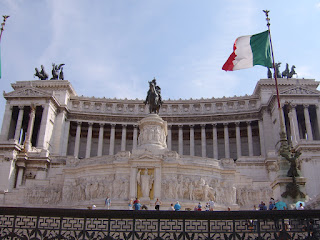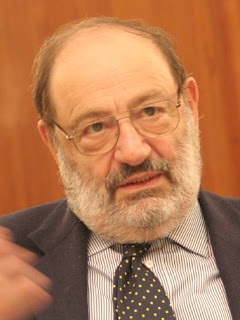Realistic figures were first painted by Florentine genius Giotto
The brilliant 14th century painter Giotto di Bondone, who was known simply as Giotto, died on this day in 1337 in Florence.
 |
| The Scrovegni Chapel in Padova, home of Giotto's stunning cycle of frescoes |
It is believed Giotto was born in about 1267 in Florence but it is not known how he learned to paint with such a sense of space, naturalism and drama. His work represented a crucial turning point in the history of art because he painted lifelike, solid figures and put in fascinating background details.
He is believed to be the first artist to make a decisive break with the Byzantine style of painting and draw figures accurately from life.
Giotto’s revolutionary style was followed by many other painters later in the 14th century and it is said that he was actually paid a salary by the commune of Florence because of his excellence.
Some of his work can be seen in the Uffizi Gallery in Florence, such as his altarpiece, The Ognissanti Madonna, painted in 1310, which is a good example of his ability to paint lifelike people.
But Giotto’s most stunning surviving work is the interior of the Scrovegni chapel in Padova. His cycle of frescoes is considered to be one of the greatest works of art in the world.
Dedicated to Santa Maria della Carita (Saint Mary of the Charity), the chapel was decorated by Giotto between 1303 and 1305. The work was commissioned by Enrico degli Scrovegni, who was hoping to atone for the sins of usury committed by himself and his dead father.
The frescoes narrate events in the lives of the Virgin Mary and Christ and cover the side walls of the chapel. On the wall opposite the altar is Giotto’s magnificent Universal Judgment, which tells the story of human salvation and includes the figure of Enrico degli Scrovegni offering up a model of the chapel to the Virgin Mary in a desperate bid to save his father from hell.
Under a bright blue sky, the realistic figures with their powerful facial expressions and colourful clothes tell the bible stories in a way they had never been told before.
In later life, Giotto was made ‘first court painter', with a yearly pension, by King Robert of Anjou in Naples. He lived in Naples till 1333 but none of his work there has survived.
| Giotto's Campanile in Florence Photo: Sailko (CC BY-SA 3.0) |
It is thought Giotto was about 70 years of age when he died on 8 January 1337. Some sources say he was buried in Santa Maria del Fiore, Florence’s Duomo, while others believe he was buried in the earlier church on the site, Santa Reparata.
In the 1970s, bones were discovered beneath the paving of Santa Reparata and forensic examination confirmed they were those of a painter. The bones were reburied with honour near the grave of Brunelleschi in the church, but it is still not certain that they are actually the remains of Giotto.
Travel tip:
It is a miracle Giotto’s frescoes in the Scrovegni Chapel have survived for 700 years. The chapel was acquired by the city of Padova in 1880 and specialised restoration operations have been carried out since. The state of the building, the quality of air, and the conservation of the frescoes have all been carefully studied. The chapel can be accessed from Giardini dell’Arena off Piazza Eremitani. There is a separate building where visitors can watch a video to prepare them for seeing the frescoes. Visits are carefully organised so people can enter the chapel and look at the frescoes without jeopardising their condition. Tickets should be booked in advance and collected an hour before the visit. For details visit www.cappelladegliscrovegni.it.
| The interior of the Scrovegni Chapel is lined with Giotto's extraordinary frescoes Photo: Rastaman3000 (CC BY-SA 3.0) |
The Campanile of Santa Maria del Fiore was designed by Giotto in 1334, but it was not completed till 1359, 22 years after his death. The bell tower is clad in white, pink and green Tuscan marble. In the 1870s, a marble façade was added to the Duomo to echo Giotto’s design for the Campanile.
Home





